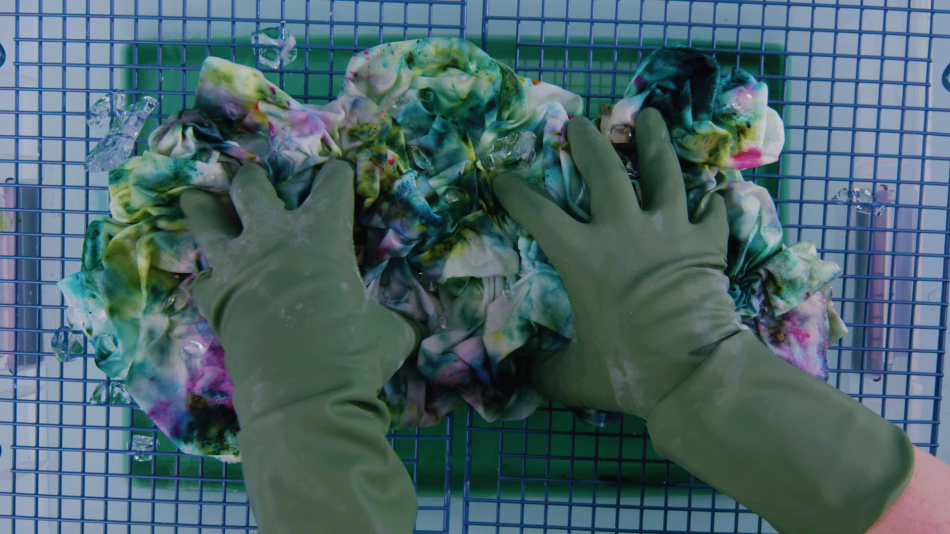The Japanese Footbridge
1899
Claude Monet
Artist, French, 1840 - 1926

In 1883 Monet moved his household, his two sons along with Alice Hoschedé and her children, to the rural community of Giverny, where he leased a house that he was able to purchase seven years later. In early 1893, he acquired a swampy area across the railroad tracks abutting his property and petitioned the village council for permission to divert a small stream into it. But it was only toward the end of that decade that he turned to the garden he had created there as a rich source of artistic inspiration.
In 1899, Monet painted 12 works from a single vantage point, focusing on the arching blue–green bridge and the microcosm of his water garden. Among the 12 works was the National Gallery's Japanese Footbridge. Monet designed and built the landscape that appears in the painting—from the bridge to the pond and its shape, to the water lilies and other plantings. The artist, who as a leader of the impressionists had espoused the spontaneity of directly observed works that capture the fleeting effects of light and color, had in these later paintings subjected a nature he re–created to sustained, meditated scrutiny.
When Monet exhibited these paintings at Durand–Ruel's gallery in 1890, a number of critics mentioned his debt to Japanese art. More telling, the impenetrable green enclosure—heightened in the National Gallery painting by the placement of the top of the bridge's arch just below the painting's top edge—harkens back to the hortus conclusus (closed garden) of medieval images, while also evoking a dreamlike contemplative zone consonant with symbolist literature, especially poems such as "Le Nénuphar blanc" by Stéphane Mallarmé. Gustave Geffroy described this effect in his review of the exhibition (Le Journal, November 26, 1900), speaking of "this minuscule pool where some mysterious corollas blossom," and "a calm pool, immobile, rigid, and deep like a mirror, upon which white water lilies blossom forth, a pool surrounded by soft and hanging greenery which reflects itself in it."

West Building Main Floor, Gallery 85
Artwork overview
-
Medium
oil on canvas
-
Credit Line
-
Dimensions
overall: 81.3 x 101.6 cm (32 x 40 in.)
framed: 101 x 120.7 x 7.6 cm (39 3/4 x 47 1/2 x 3 in.) -
Accession Number
1992.9.1
More About this Artwork

Video: D.I.Y. Art: Tie Dye Inspired by Claude Monet
Take a moment to “chill” with Claude Monet and this step-by-step D.I.Y. guide to tie dyeing like a pro.

Video: Monet's Water Lily Garden and Japanese Footbridge
This video discusses Claude Monet and his work, Japanese Footbridge, at the National Gallery of Art.

Video: Monet's Palette and Technique
Learn the Impressionist artist Claude Monet's en plein air landscape painting techniques from his beautiful garden in Giverny, France.
Artwork history & notes
Provenance
Purchased January 1900 from the artist by (Durand-Ruel, Paris); sold 1920 to the Carnegie Institute, Pittsburgh; sold 1953 to (Sam Salz, New York); sold to Henry T. Mudd, Los Angeles; by inheritance to his wife, Victoria Nebeker Coberly [Mrs. William B. Coberly, Jr., 1917-1991], Los Angeles; her estate; gift 1992 to NGA.
Associated Names
Exhibition History
1900
Galerie Durand-Ruel, Paris, 1900.
1905
Pictures by Boudin, Cézanne, Degas, Manet, Monet, Morisot, Pissarro, Renoir, Sisley, Grafton Galleries, London, 1905, no. 136, as The Water Lily Pond.
1920
Nineteenth Annual International Exhibition of Paintings, Carnegie Institute, Pittsburgh, 1920, no. 238.
1999
Masterpieces from the National Gallery of Art, Washington, Kyoto Municipal Museum of Art; Tokyo Metropolitan Art Museum, 1999, no. 44, repro.
Around Impressionism: French Paintings from the National Gallery of Art, Los Angeles County Museum of Art, 1999, no cat.
2000
Art for the Nation: Collecting for a New Century, National Gallery of Art, Washington, D.C., 2000-2001, unnumbered catalogue, repro.
2011
Impressionist and Post-Impressionist Masterpieces from the National Gallery of Art, The Museum of Fine Arts, Houston; The National Art Center, Tokyo; Kyoto Municipal Museum of Art, 2011, no. 33, repro.
2019
Monet: The Late Years, Fine Arts Museums of San Francisco, California Palace of the Legion of Honor; Kimbell Art Museum, Fort Worth, 2019, no. 3, repro.
Bibliography
1927
Regamey, Raymond. "La formation de Claude Monet." Gazette des Beaux-Arts 5e périod, tome15 (February 1927):65-84, repro.
1974
Wildenstein, Daniel. Claude Monet. Biographie et catalogue raisonné. 5 vols. Lausanne and Paris, 1974-1991: no. 1517.
1993
Swicklik, Michael. "French Painting and the Use of Varnish, 1750-1900." Studies in the History of Art 41 (1993): repro. 156.
2004
Hand, John Oliver. National Gallery of Art: Master Paintings from the Collection. Washington and New York, 2004: 387, no. 321, color repro.
Inscriptions
lower right: Claude Monet / 99
Wikidata ID
Q12858617

